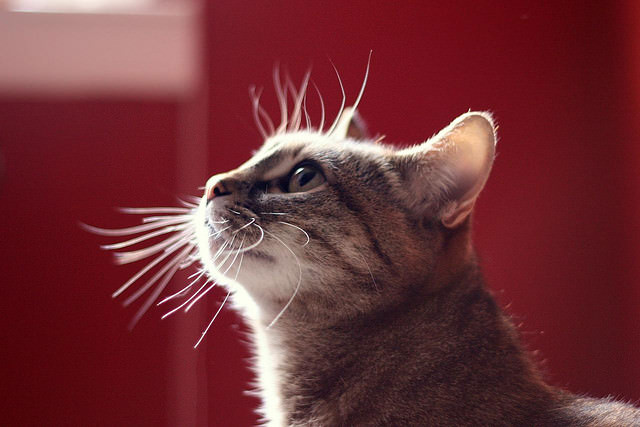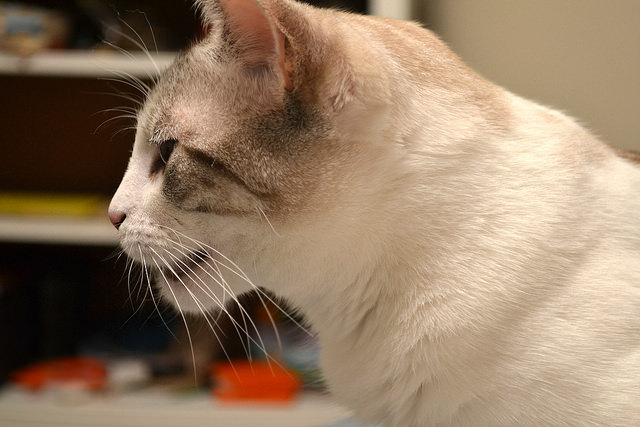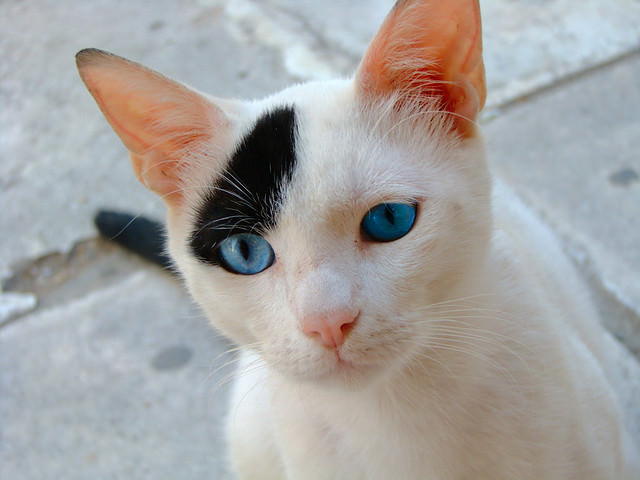Cats are incredible creatures with lightening-fast reflexes; your cat’s wildcat ancestors used those reflexes to hunt and stay safe from predators. Since your domestic cat is still wild at heart, they remain sharp even in you’re safe and cozy home.
In fact, a cat’s awareness about her environment is almost always sharp– even when she’s blissfully cuddling on your lap or deep in sleep on the top tier of the cat tree. Her instincts and reflexes ensure that she’ll always be ready to snap into action at a moment’s notice. Here are 4 unusual ways that your cat stays alert and keeps an eye on her world.

Image: dano272 @ Flickr
#1 – Whiskers
Your cat’s whiskers help her glean all sorts of information about her environment. Most people understand that whiskers help your cat navigate her environment by being “feelers”– they let her know if a space is too narrow for her to squeeze through or let her know if danger is close to her face.
But did you know that whiskers can also help your cat “see” even when they aren’t touching anything? It’s true! Your cat’s whiskers are rooted in tons of very sensitive nerve endings which help her detect small shifts in the air currents of her environment. Those changes, which are completely undetectable to us, can help her detect a hidden predator or know that a midday snack is wiggling nearby.

Image: Robert Couse-Baker @ Flickr
#2 – Swiveling ears
If you pay attention, you’ll notice that your cat’s ears never stop working. Even when she’s on the verge of a decadent nap, her ears will be twitching and swiveling.
Your cat’s ears are a couple of her greatest assets since her sense of hearing is five times stronger than yours! The swiveling is part of a fine-tuned tool that allows her to hone in on the slightest sounds so she can “see” her environment without even opening her eyes.

Image: Erin Murphey @ Flickr
#3 – Multi-layered smelling
A sense of smell is one of the first ways your cat learned about her environment when she was a kitten. And her sense of smell is remarkable– it’s nearly 15 times stronger than your own!
What’s even more notable, though, is that your cat has an organ on the roof of her mouth (called the vomeronasal organ or Jacobson’s organ) that makes her sense of smell even better. Has there ever been a time when you’ve noticed your cat pulling back her upper lip while she sniffs the air? When she does that, she’s taking advantage of the Jacobson’s organ. Pulling back her lips and slightly opening her mouth helps her inhale the scents into the organ. The scents are then transmitted to an entirely different part of her brain as the scents she is inhaling through her nose. This adds a whole other layer of complexity to the information she’s able to gather about her environment.

Image: salinsky @ Flickr
#4 – Impeccable night vision
Your cat has a reflective layer of tissue behind her retina called the tapetum lucidum. When light passes through your cat’s retina, the tapetum lucidum reflects light back into the eye for a second shot. This process improves her vision by a whopping 44%! That means that, especially in low light situations, your cat can see light that’s invisible to you!
On a side note, the layer of tapetum lucidum is responsible for why your cat’s eyes sometimes show up as glowing green orbs in photographs!

